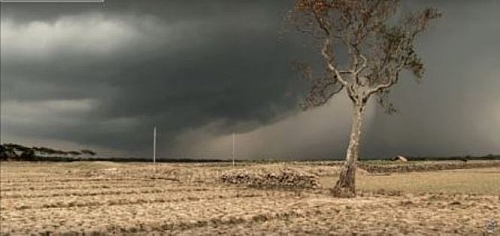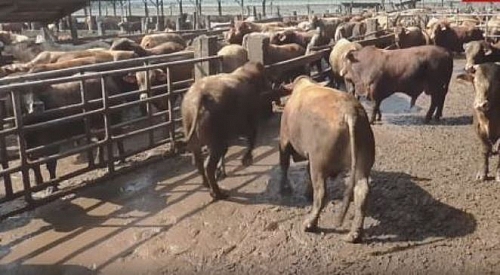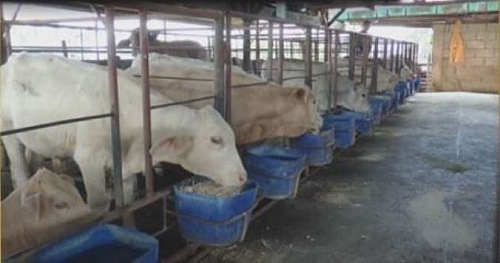Have you ever wondered why farmers in your locality produced small quantity of crops in a particular year and why in the next year they decided to produce more food crops? Although the could be many factors that led to high yield of crops and low yield of crops in a particular, but the main reason could be as a result of changes in rainfall in those years. If you have really been paying attention to the local climate of your immediate environment, you will sure notice some of these changes in agricultural production, and these changes occur due to variability and climate change.
Rainfall, drought and wind could affect planting seasons; climate changes affects food quality and quantity because all crops require suitable weather condition such as rain, sun, air and even soil to grow and if these conditions become severe or in extreme level, the growth and yield of the crops are going to be affected negatively.
Agriculture is a sector that aimed at growing crops, providing foods, water supply and raising of livestock to meet the need of the growing world population. All the listed areas and other aspects of agriculture are affected in one way or the other by different factors such as climatic factor, poor funding, and mismanagement, inconsistency and government policies.
The commonest factor that is climate has a greater impact on all the sectors of agriculture, and the impacts usually occur naturally or through human activities. Climate also has much influence on man, livestock, economic and food production in different parts of the world. However, agriculture is the major factor that contributes to climate changes and climate in turn has a greater effect on food production.
Many findings have revealed that variability and climate change have both negative and positive influence on food production and food security in many parts of the world. Climate change affects agriculture and food availability in many ways.
Table of Contents
Various causes of climate change on food supply and crop production
- Climate extreme
- Rainfall
- drought
- High temperature
- Changes in nutritional quality of foods
- Sea- level rise
- Pest and diseases
- Carbon dioxides
- Time and season
- Carbon dioxides
Effects of climate change on food security and crop production
- Climate extreme (heat waves) – Climate change increases the frequency and intensity of some natural disasters such as droughts, floods and storms. This has an adverse impact on the livelihoods and food security. Climate-related disasters have the potential to destroy crops, critical infrastructure, and key community assets, therefore deteriorating livelihoods and then leading to poverty.
- Rainfall– plants get most of their moisture from rainfall (precipitation) and this moisture is required in moderate quantity for growth and maintenance. Too much rainfall would lead to poor crop yield through the process of erosion and waterlog the crop roots and then depriving their roots of any available air and nutrients. Leaching of top soil is another factor that affects the soil when there is extreme water; the water drains away the soil taking with it dissolved and suspended material in the process and leaving the crops with little or no nutrients for proper yield. In this case, these crops are left with no nutrients and they wither away thus leading to low yield and low food supply.
- Drought– lack of rainfall is an extreme climatic factor that affects food security that in turn could lead to food scarcity. Conflict can easily occur between the affected areas and many may migrate to states or countries that are not sharing in the same experience. Some parts of the world especially African countries are already prone to drought, these places are likely to experience land degradation, reduced food production, increased food prices, decreased in exportation of some vital food crops, which could further lead to food scarcity or famine.
- High temperature– extremely high temperatures are severe factor that bring heat stress on crops and livestock, increasing evaporation, sterility and thus lower the overall production of foods.
- Incidence of pests and diseases– change in temperature during the planting season could bring about spread of plant diseases and pests (weevils, beetle and weeds) which are known to affect crop yields, productivity and storage system thereby leading to shortage supply.
- Changes in nutritional value of foods– increasing carbon dioxide can stimulate plant growth; it also limits the nutritional value of most food crops. Rising levels of atmospheric carbon dioxide reduce the concentrations of protein and essential minerals in certain plants like soybeans and wheat; this direct effect of rising carbon dioxide on nutritional value of crops is also a threat to human health. Additionally, human health is constantly been threatened by increased used of pesticide due to increased pest pressures and reductions in the efficacy of pesticides.
- Sea-level rise- sea-level will affect livelihoods of communities in coastal areas and river deltas. Accelerated glacial melt will also affect the quantity and reliability of water and the changing patterns of flooding and drought; however, rising seas contaminate coastal freshwater aquifers with salt water. Several small island states are already having serious problems with water quality, which is affecting agricultural productivity. Higher seas also make communities more vulnerable to storm surges, which can be 5-6 metres high.
- Carbon dioxides– Some findings have shown that higher carbon dioxide can levels lead to reduced plant intake of nitrogen, protein and other essential nutrients (and a smaller the number of carbon dioxide showed the same outcome for zinc, this impact could lower nutritional intake by certain crops such as rice, soybeans and wheat. This could be a negative impact on a larger population especially in poorer countries that are unable to compensate by eating more nutritional diets, or possibly taking supplements. Additionally, increasing carbon dioxide concentration is the main factor that causes climate change globally thereby affecting the production of certain crops. The change in climate has affected the length and quality of the growing season in many ways and farmers could experience increasing damage of crops caused by a rising intensity of droughts or flooding.
- Time and season- time and season are important factors that influence food production in different parts of the world as farmers tend to produce more food when there are longer months of rainfall or when the months of rainfall extend or last longer. Once the rain ceases within a shorter period, the planting season also will reduce and only few farmers are able to adopt irrigation farming system, while majority of them will choose to wait for the next planting season. In addition, warmer temperatures and longer growing seasons might also allow new crops to be cultivated, but in some parts of the world, extreme heat, reduced precipitation and low water availability may lead to late planting and may further reduce crop productivity and bring about food shortage. Crop yields also vary increasingly from year to year due to extreme weather events and other factors such as pests and diseases.
- Decision making– growing seasons are constantly changing; as there is uncertainty to weather prediction due to prolong drought and extreme heat. In this case, farmers do not have the full knowledge of when exactly to plant certain crops. Climate change affects may also affect farmers decision during rainy season, most crops like rice thrive well in mushy environment where there is excess water supply, but when there is insufficient water supply (drought) such crops may not really survive or yield bountifully. In such cases, the farmers may switch to irrigation system of farming as an alternative way and if the water supplied to them is at a high cost, they may switch over to other crops for instance, let say potatoes or tomatoes, which does not require much water like rice. These switches in choice of planting will automatically lead to shortage of a particular food supply.
On a general note, climate change does not only affect land-based foods, but other foods such as seafood (marine fish) poultry and even livestock farming. Temperature, melting ice over exploitation and pollution also affect marine lives and the distribution of some fish species may be due to reduced water volume, high salinity and temperature changes. Some marine species are already adapting to these severe conditions by moving away from where there is warmer water bodies and where the salinity is high, to where there is high volume of water and colder water bodies, while some have nowhere to move since there are no nearby water bodies hence leading to increased death of useful marine life.
Additionally, the absorption of carbon dioxide emissions by the oceans also has a direct impact on marine ecosystems through ocean acidification and in this case, the prices of these foods tend to increase due the above-mentioned factor and the poorest countries are the most affected of all.
Poultry farming and livestock farming are also prone to extremely cold and extremely hot weather condition, most especially birds, sheep, goats, and cattle are constantly vulnerable to disease, reduced fertility and reduced milk production as a result of heat stress. Heat waves, which increase because of climate change, may directly or directly threaten the production of livestock and other reared meats in many ways thus reducing their market supply and in turn increase their market price.
Effect of climate change and nutrition
Some of the health effects caused by climate change include:
- Malnutrition
- Micronutrient deficiencies
- Spread of Infectious diseases
- Starvation resulting in marasmus
- Population displacement resulting in overcrowding and spread of contagious infection
- High rate of mortality
One of the solutions to this impending factor is adaptation to climate change.




